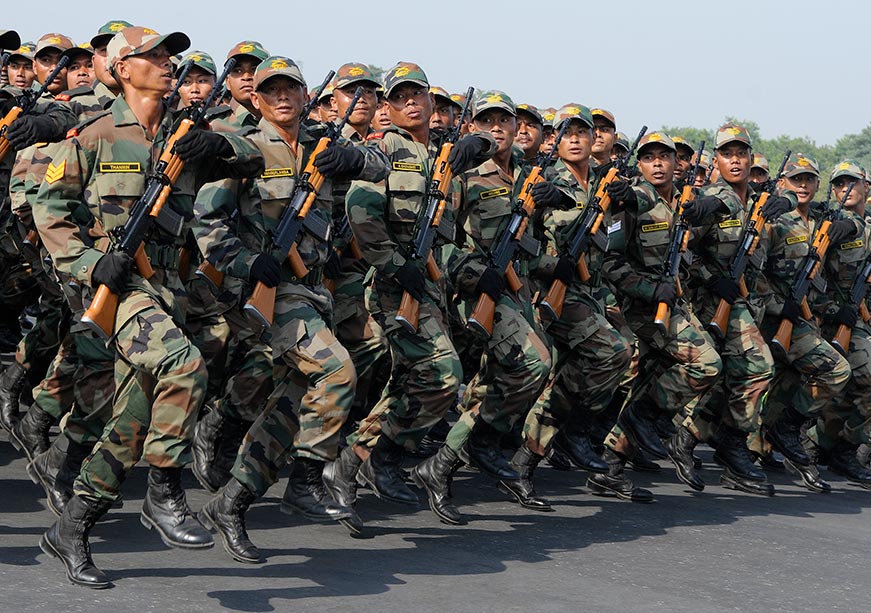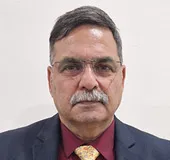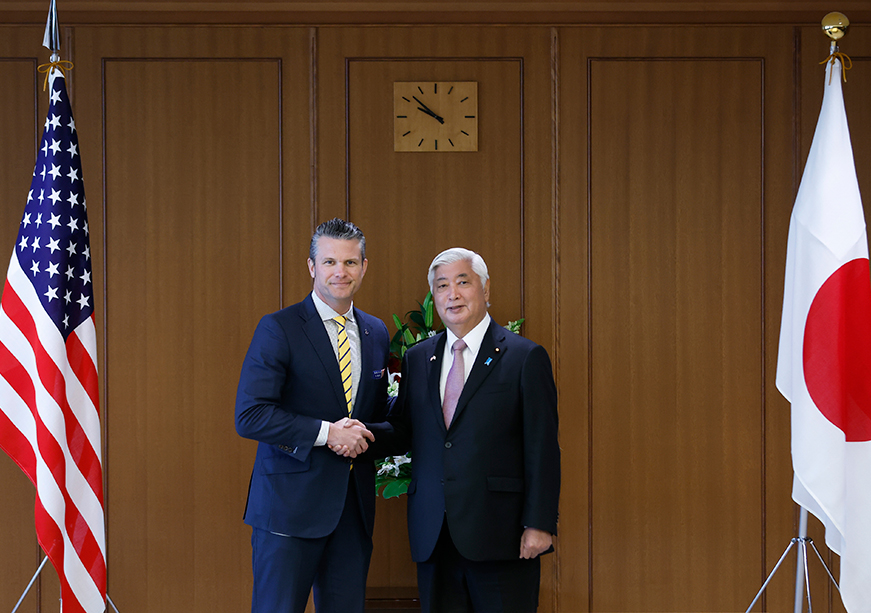
Image Source: Getty
The evolution of warfare has progressed from land, maritime, air, space, cyber, and artificial intelligence (AI) domains, with each transformation occurring over decreasing intervals of time and transforming the character of war itself. In today’s uncertain world, marked by geopolitical rivalry, rising nationalism, failure of multilateral institutions, and the revival of a rules-based world order, where only ‘might’ is right and ‘the law of the jungle’ prevails, anything can be weaponised. While militaries grapple with urban conflict, the proliferation of unmanned systems, proxy wars with non-state actors, and the use of the cyber, AI, and space domains, they must not lose sight of the basic tenets and principles of war. Each nation, depending on its geographical location, threats, economy, and evolution as a nation-state, encounters unique challenges in using its military as an instrument of national power.
While militaries grapple with urban conflict, the proliferation of unmanned systems, proxy wars with non-state actors, and the use of the cyber, AI, and space domains, they must not lose sight of the basic tenets and principles of war.
The Indian Armed Forces have evolved similarly since independence in 1947, having fought four wars with its neighbours, besides undertaking counter-insurgency operations and fulfilling other roles towards nation-building, peacekeeping, and international diplomacy. As the country looks towards modernising its forces through ‘Atmanirbharta’ (“self-reliance”), it has undertaken integration and synergy, which are considered essential to not only deter but also prosecute wars and achieve any national objectives when required.
The reorganisation or restructuring of the armed forces commenced in 2019 with the setting up of the Directorate of Military Affairs in the MoD and the appointment of the Chief of Defence Staff. These bold steps devolved secretarial powers to uniformed personnel. Since then, significant work towards integration has been undertaken amongst the armed forces, and much more remains to be done towards achieving synergy in operations.
As the debate on the organisational structure and form of the armed forces for the future gathers steam, it is also an opportune moment to reflect on the domain specialisation of the land, maritime, and air forces. As wars and conflicts are waged against adversaries who can seamlessly operate across domains, it is pertinent for India to structure its forces in a manner where the commander is akin to the conductor of an orchestra or symphony, with the various forces under his command acting like the elements of the orchestra. It is not only important but also incumbent upon the conductor to understand the nuances of every note and instrument to wield his baton effectively and to have the wisdom to acknowledge that each player who plays the instrument of his choice is a professional in his own right. The same holds for professional soldiers, sailors, and air warriors who know how best to employ the forces in their respective domains.
The role of technology and the asymmetric advantages that would accrue from a highly trained, motivated, effective and efficient force must also be considered.
With shrinking or stagnant defence budgets and the burgeoning cost of weapons and platforms, it is increasingly important to achieve the optimum capability and capacity that synergises all domains to become the fist that lands the knock-out blow. In such a scenario, for each service to acquire assets in domains other than their own would be not only foolhardy but also detrimental to national interests. For surface forces, land or maritime, to have air forces of their own with force multipliers like Flight Refueler Aircraft and Airborne Warning and Control Systems could be counter-productive and shift their focus from their specialisation. The recent transfer of all land-based fighter aircraft of the People’s Liberation Army Navy (PLAN) to the People’s Liberation Army Air Force (PLAAF), along with the transfer of responsibility for mainland air defence, which had previously been divided between PLAN and PLAAF, bears testimony to the strategic advantage of placing aviation assets under a single specialised command structure. Notwithstanding the lack of a white paper or a national security strategy, the political leadership or executive authority is cognisant of the expectations of the armed forces for national security. Therefore, it is even more important for the services to think in unison and project their service requirements accordingly. Each service cannot equip, train, or fight in all domains because the nation can ill-afford the cost of manning, training, and equipping for the same.
Capability development of the armed forces with the incorporation of advanced technologies for warfighting while achieving integration and synergy should also result in a commensurate reduction in manpower. The role of technology and the asymmetric advantages that would accrue from a highly trained, motivated, effective and efficient force must also be considered. Capital acquisition should prioritise what gives the most bang for the buck towards warfighting and national security, irrespective of the prejudices often displayed by the colours of uniforms. The nation cannot afford to replicate capabilities across services. The commander or the conductor of the fighting force must have the sagacity and wisdom to effectively employ professionals who understand the core competencies of their respective domains. At the same time, prudence dictates that the commander is not influenced by the colour of their uniform. Only then would the Indian Armed Forces achieve true synergy and integration.
Air Vice Marshal Anil Golani (Retd) is Additional Director at General Centre for Air Power Studies (CAPS), New Delhi.
The views expressed above belong to the author(s). ORF research and analyses now available on Telegram! Click here to access our curated content — blogs, longforms and interviews.




 PREV
PREV


